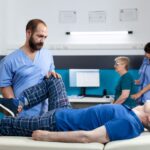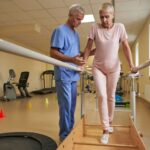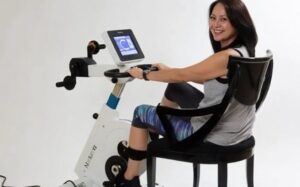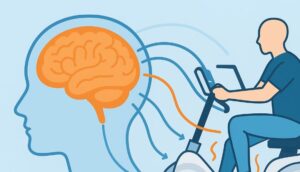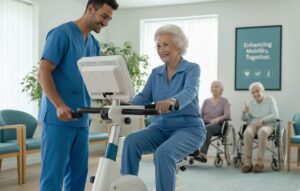
While we know that regular exercise is part of a healthy lifestyle, there are some significant benefits to including exercise into a rehabilitation plan after an acquired brain injury. Studies have shown that incorporating any volume of easy aerobic exercise to a recovery plan can greatly increase the quality of life in the patient.
Patients who choose to add aerobic activities like walking, cycling and rowing to their post injury routine are likely to experience benefits in both their brain health and their overall physical health. Just 10 minutes of activity each day can have significant benefits for the patient.
Active-Passive Cycle Therapy, such as that offered by the MedUp V2 cycle, can help users realize gains in mobility and reduce spasticity. Multiple training modes include passive, assisted, active and isokinetic supporting a range of conditions and therapy stages.

Exercise is good for the brain
Even in a healthy body there is obvious evidence that aerobic exercise is good for brain health largely thanks to the increased flow of oxygen to the brain. In an injured brain this burst of oxygen is even more beneficial to help induce healing and improve cognitive function. There are a number of direct benefits of exercising on an injured brain.
Improved mood
The occurrence of a traumatic brain injury will often lead to some level of depression and anxiety, especially when there is a related diminishing of their quality of life. A 2017 study has shown that a regular exercise routine will have a positive effect of the mental health and mood of many patients who have suffered a brain injury.
Improved cognitive function
Much like any other muscle in the body, the brain needs to be worked out in order to be in top health. While you may be inclined to rely on cognitive exercises to work out the brain, it has been shown that physical exercise can have some significant positive effects on brain function as well. Aerobic exercise like walking, cycling or yoga can stimulate the formation of new connections in the brain as well as the release of certain hormones that help grow new brain cells.
Maintains physical fitness
It is not uncommon for someone with an acquired brain injury to experience a reduction in their overall physical health. A regular fitness routine can help them maintain cardio health, muscle strength and the weight.
Increased physical ability
Patients who incorporate regular exercise into their recovery routine are more likely to experience improved mobility and sense of balance thanks to strengthened muscles and improved neuro pathways.
Active/passive therapy is a useful tool
After a patient has suffered a brain injury it can be difficult to maintain an exercise routine, especially when they are at home facing reduced supervision and less hands-on support. An active/passive cycle trainer is the perfect solution in these instances because of its ability to be used with very little outside support.
An active/passive trainer like the MedUp V2 has some very relevant and significant tools to benefit those recovering from an acquired brain injury.
Variety of program styles – Whether the patient is able to use the cycle trainer completely on their own or needs some level of assistance to maintain their cycle, the built-in programs will provide whatever level of support they need.
Built-in safety features – The sturdy base and integrated spasm recognition software help ensure that even those with balance concerns and muscle spasms can safely use the cycle trainer without supervision.
Symmetrical training setting – If one side of the body is stronger than the other, the symmetrical training setting will allow each side to push as hard as it is able to.
Compact and Portable unit – The MedUp V2 bike features a compact and portable system that can fit in any size of space.
Early mobilization is a key to recovery
Recently, more and more medical professionals are encouraging patients to become physically active quite soon after a brain injury. The evidence is showing that if a patient is physically able to get out of bed for any level of physical activity, they are more likely to experience positive effects to their brain and body health.
Early mobilization plays a significant role in a patient’s ability to recover from brain injury and can help them return to some form of normal life sooner than if they don’t make the effort. It can also lead to a shorter hospital stay and a reduction in negative outcomes.
Exercise benefits a brain injury
After a short phase of dedicated rest and limited exertion, incorporating exercise into a rehabilitation plan helps to increase blood flow to the brain leading to an improved recovery experience. An exercise such as the one provided by the MedUp V2 cycle trainer helps the brain to rebuild and regrow neural pathways, which is an important part of recovery after a brain injury.
The repetitive motions created by a cycle trainer, bicycle or rowing machine help to retrain the brain and rehabilitate its coordination and muscle memory. Incorporating an active-passive trainer into a rehabilitation plan after a brain injury can have several positive effects when it comes to the recovery process.
